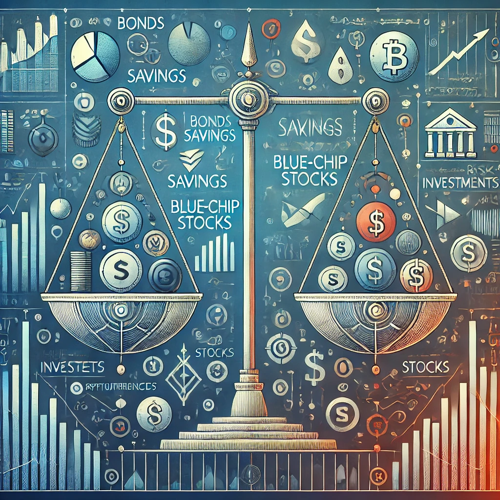Discover the Forex Markets. Start Forex Trading. What is the Logic of Forex?
Forex market is a financial market where the values of currencies used around the world are determined against each other and buying and selling transactions are made based on these values. Investors buy, predicting that one currency will appreciate against another, or sell, anticipating that it will lose value. For example, an investor who thinks that the Euro will gain value against the US Dollar in the EURUSD parity buys the Euro and sells the Dollar in return.The basis of the Forex market is the determination of exchange rates according to supply and demand balances. This market is affected by economic, political and social events around the world, and these effects cause constant fluctuations in exchange rates. Investors aim to make profits by taking advantage of these fluctuations.
Leverage is an important feature of the Forex market and allows traders to trade large amounts with a small margin. However, while leveraged transactions can increase potential profits, they can also increase potential losses at the same rate.Risk management is important when trading in the Forex market. Investors limit their risks by using orders such as stop-loss and take-profit and adjust their position sizes according to the collateral in their accounts.
What are Forex Concepts?
Leverage: Leverage in the Forex market is a mechanism that allows the investor to open large positions with a small collateral. For example, with a leverage ratio of 1:100, you can open a position of 100 units with 1 unit of collateral. Leveraged trading can increase potential gains but can also increase potential losses, so it should be used with caution.
Lot Types:Standard Lot: 100,000 units in size. For example, if you buy 1 standard lot in EURUSD parity, you will receive 100,000 Euros.
Mini Lot: 10,000 units in size. If you buy 1 mini lot, you open a position of 10,000 units.Micro Lot: 1,000 units in size. If you buy 1 micro lot, you open a position of 1,000 units.
Spread: It is the most common cost item encountered when trading in the Forex market. Spread refers to the difference between the buying price and selling price of a currency pair. Spreads are usually expressed in pips and may vary depending on liquidity.
Pip: The smallest price movement in a currency pair. It is usually displayed at the fourth decimal place. For example, when the EURUSD parity increases from 1.1236 to 1.1237, the price increases by 1 pip.
Margin (Collateral): Margin refers to the minimum amount of funds required for the investor to maintain open positions. The margin level indicates how much of the total value of the open position it represents. In case of a margin call, you may be asked by the broker to deposit additional collateral when the collateral level in your account decreases.
Stop-Loss and Take-Profit:Stop-Loss: Also known as the stop loss level. It automatically closes your position when it reaches the price level you specified when opening the position, thus preventing unexpected losses.
Take-Profit: Also known as the take-profit level. When it reaches the price level you determined when opening the position, it automatically closes your position and thus you realize your profit.
Swap (Overnight Carrying Cost): It is the cost that may occur if your position is carried to the next day at the end of the day, depending on the parity you trade in the Forex market. The swap is calculated based on interest differences and a three-day swap is generally applied on Wednesdays.
Technical and Fundamental Analysis: These are two fundamental analysis methods used when trading in the Forex market.
Technical Analysis: It is an analysis method that tries to predict future price movements by examining past price movements and transaction volumes.
Fundamental Analysis: It is an analysis method that examines the factors that may affect the value of currencies by analyzing macroeconomic factors such as economic data, political developments, and central bank policies.
How to Register for Forex? Logic of Forex.
1-) Forex Broker Selection: First, you should choose a reliable Forex broker. Brokerage firms provide investors with the opportunity to trade in the Forex market. When choosing a brokerage firm, you should pay attention to factors such as reliability, regulatory and licensing status, transaction fees, and platform support.
2-) Opening an Account: You must open an investment account through the Forex brokerage firm of your choice. Account opening is usually done online and you will be asked to provide your personal information and necessary documents. Account types may include options such as standard accounts, mini accounts, demo accounts.
3-)Identity Verification: After opening an account, identity and address verification is usually required. For this, you may need to send documents such as identity proof (such as passport or ID card) and residence proof (such as invoice or bank account statement) to the brokers. (From: Logic of Forex)
4-) Depositing Collateral: You will need to deposit a collateral in order to make transactions in your account. This coverage may vary depending on the account type and leverage you choose. Deposit is usually made using bank transfer, credit card or other payment methods.
5-)Platform Selection and Trading: After depositing collateral to your account, you can start trading using the Forex trading platform of your choice. Trading platforms are generally widely used platforms such as MetaTrader. You can trade various instruments such as currency pairs, commodities, indices, etc. through the platform.
Discover the Forex Markets. Start Forex Trading. What is the Logic of Forex? Click here and learn more.


